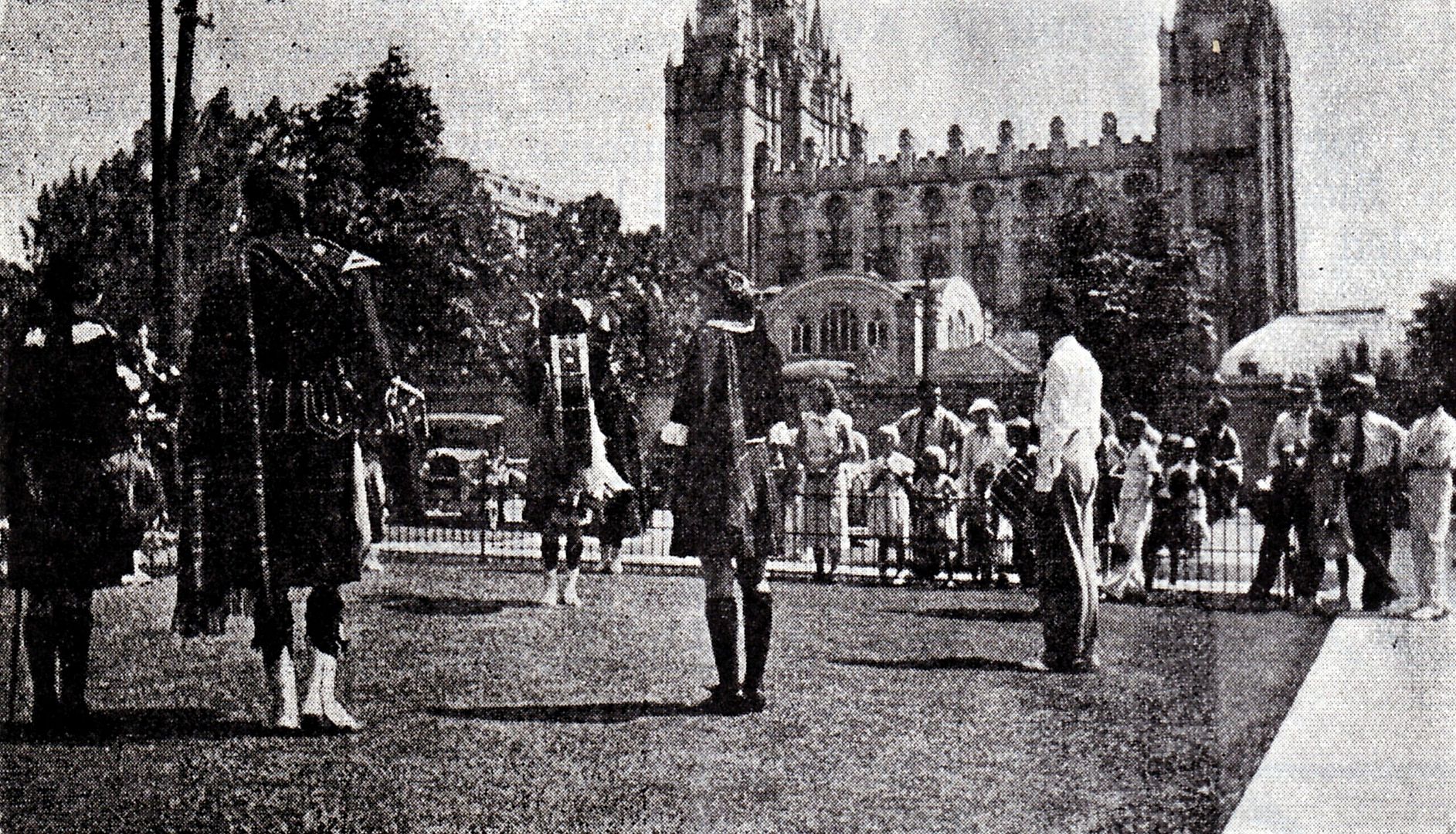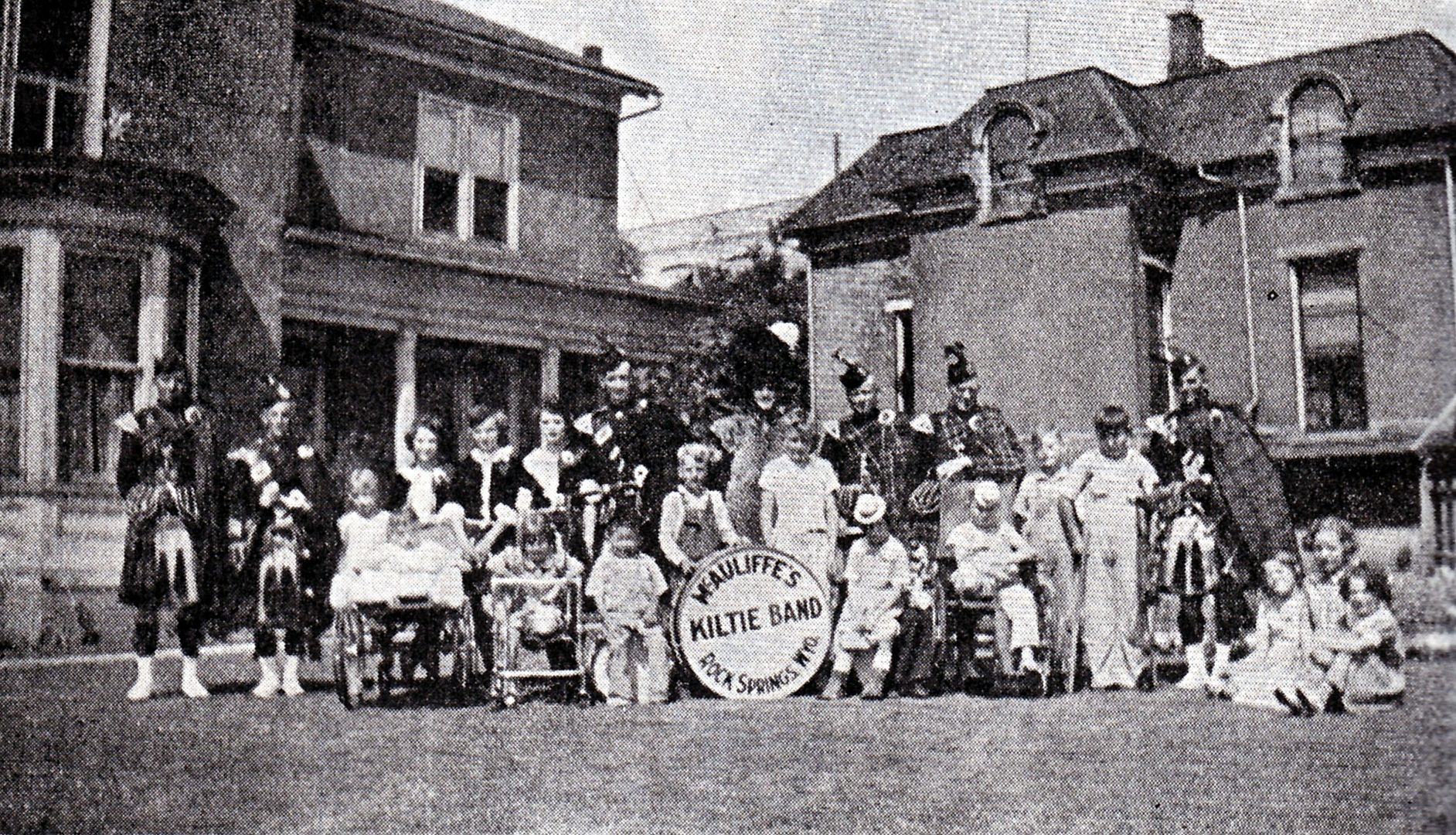This post is in partial atonement for the “cheap Scot” jokes that appear so often in the Funny Bones compilations.
From 1922 to 1952, the Primary Children’s Hospital was located in a large, remodeled home on North Temple, in Salt Lake City, across from Temple Square, on the block where the Conference Center now sits. It was solely what was then called a “crippled children’s” hospital – the hospital took no acute or contagious disease cases, no traumas, no burns, but only orthopedic cases. They treated crooked spines, club feet, malformed joints, nutritional deficits that resulted in skeletal deformations.
Because the children were generally not sick, but had active minds in bodies that could not run or walk, I think they must have been very aware of the Pioneer Day parades whose route passed just one block away from the hospital. The marching bands and the noise of the crowds must have been near enough to hear, yet too far away to see. I imagine that would have been disappointing to children whose natural inclination would have been to take part, had their limbs allowed them to push through the spectators to places where they could have watched the floats and the horses and the pretty parade royalty throwing candy for the children to scramble after.
In 1937, the Pioneer Day parade included McAuliffe’s Kiltie Band, a group based at Rock Springs, Wyoming, and sponsored by the Union Pacific Coal Co. The Kilties were bagpipers accompanied by young girl dancers. They had come to Salt Lake City directly from a band competition at Santa Monica, California, where they had carried off the first prize, and they were headed home to Wyoming that evening.
The Kilties, though, made one unscheduled stop on that hot summer day. In full regalia, with their pipes blaring and their dancers stepping, the band left the parade route and marched one block north, to the broad lawn in front of the Primary Children’s Hospital. There they put on a concert just for the delighted children, and posed for photos on the lawn with as many children as could be carried or wheeled out to join them.

.
.
.
.
.
.
.
.
.
.

.
.
.
,
.
.
.
.
.
.
.
(That fantasy building you see on Temple Square is the old Temple Annex which housed offices, dressing rooms, a chapel, and other support rooms, with an underground tunnel leading to the Temple; it was replaced in the early 1960s with an annex building that more closely mimics the architecture of the Temple itself.)
Continue reading at the original source →



